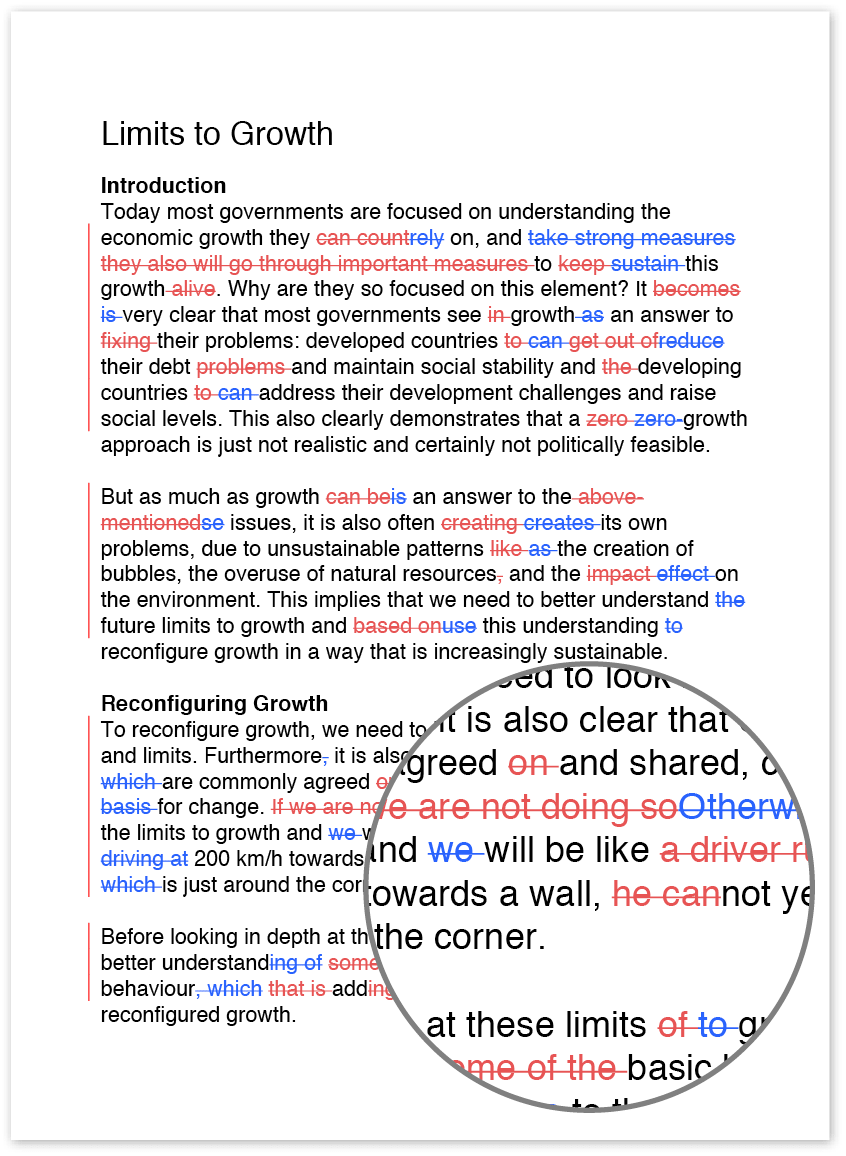What happens during editing?
Once you’re finished writing a paper, you may need to have someone edit it for you. However, if you’ve never had someone edit your work before, you may not be sure of what happens during editing. Here we’ll describe the major areas editors look at when they edit a paper and the steps they follow to ensure that your paper is error free.
What do editors look at during editing?
Editors focus on a few major areas while editing papers, including grammar, punctuation, spelling and sentence structure; sometimes, they may also focus on clarity, consistency and organisation.
Grammar. When checking grammar, editors will make sure you haven’t made any grammatical errors, such as subject–verb agreement errors, incorrect word choice (‘affect’ vs. ‘effect’), mixed up verb tenses, etc.
Punctuation. Editors will also make sure you haven’t misused or forgotten any important punctuation, such as misplaced commas, incorrect apostrophe use, missing punctuation at the end of sentences and so on.
Spelling. Even though you may have run a spell check on your document before you sent it to your editor, remember that spell checkers aren’t perfect. They won’t necessarily catch whether you’ve used ‘too’ when you should have used ‘to’ or ‘red’ when you should have used ‘read’. Thus, editors will also carefully watch for any misspelled words and correct them.
Sentence structure. Editors correct mistakes in sentence structure that make writing hard to understand, such as dangling modifiers, incomplete sentences and run-on sentences.
Clarity, consistency, and organisation. Even though these don’t fall under the category of mistakes, necessarily, editors will sometimes make changes or recommendations for places in your document where you could reword your text to make your meaning clearer, note instances where information or usage is inconsistent and offer suggestions on how to better organise the content to convey your meaning. Note that if this is something you’d like your editor to do, make sure to request this before they start working; changes such as these are sometimes known as content editing, and some editors may charge extra for such higher-level editing.
What steps does an editor take when editing?
Although every editor is different, with his or her own working process, there are a few steps that most editors will include in each job.
First, depending on the length of the job, editors may skim through the content quickly to get an idea of how much work is needed and a general idea of the content’s meaning. This also allows the editor to contact you with any initial questions about the scope of the job.
After ensuring that the scope of the job is clear, the editor will begin by completing a first pass of the document, checking for mistakes in all the areas listed above. For complex or long documents with many abbreviations, special terms, formatting styles etc., some editors may create a stylesheet, which is a special list of formatting instructions, terms used and more that helps the editor keep all the information about the job straight.
After completing the first pass, the editor will complete one or more additional checks to ensure that no lingering errors remain in the document. Many editors will also run the spell check in their word-processing software to help catch any mistakes.
Finally, the editor will return the document to you with information on changes made and any tracking tools used to show the edits in the document.
Read more
Business proposals – writing, templates and formats
Effective business communication

